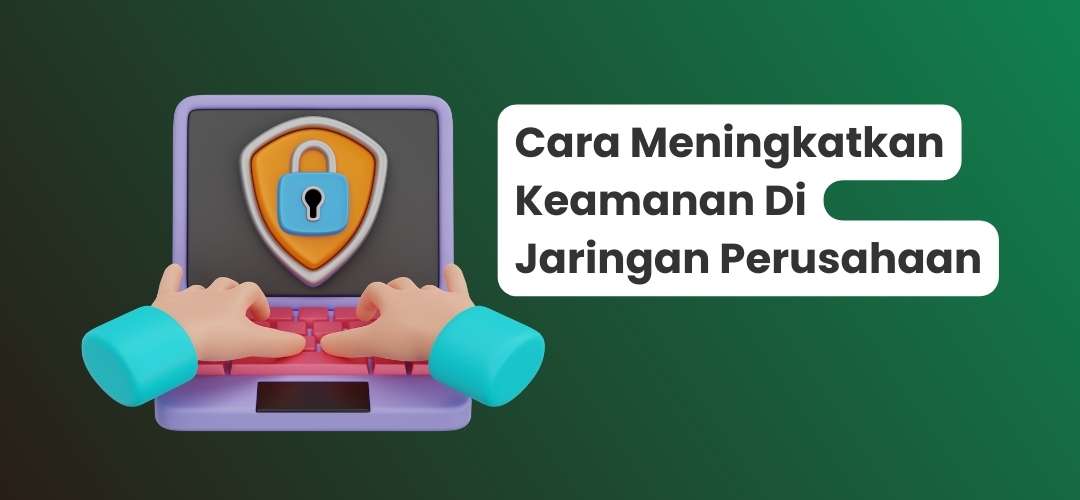Network security has always been a top priority for businesses, but it is becoming increasingly important in the age of rapid technological development. Every day, hundreds of new malware, attacks, and vulnerabilities are discovered. Keeping up to date on cyberattacks and cybersecurity can be overwhelming. There are so many approaches to security, including tools, techniques, and frameworks. Which steps can you take that will be most beneficial for securing your business?
Perfect Your Identity Management Architecture
Attackers can try to log in to any available information systems with any credentials they find during their reconnaissance.
Prevent this with the following steps:
- Manage/disable old and unused accounts
- Implement strong onboarding and offboarding solutions to keep the identity directory clean
- Allocate time to clean up and organize your identity solution
- Manage passwords with the help of password managers and Multi-Factor Authentication (MFA)
Upgrade Your Password Technology
Use a password manager to manage all accounts that connect to your company network. This is not just for advanced users or administrators, but for everyone. Account security will be better protected if you set a strict password standard for your accounts. With a password manager, users should be able to easily set unique passwords for each account.
The passwords will be generated by a random password generator, and they will be very complex, and longer than usual. It is likely that users will initially resist the use of a password manager and the password requirements that seem so complicated. Therefore, it is important to educate users on the importance of strong passwords and how often they should change them.
A good password manager also integrates with various MFA solutions
Encrypt All Endpoints
Windows, Mac OS, and Linux all support strong full-disk encryption. Often you can start the system to be encrypted and the user won’t even realize it. Make sure to back up the encryption key from the system to a database or secure data storage if you need to restore the data later in running your business. Historically there have been concerns about data loss, complexity of encryption tools, and performance issues for users, but most of these issues have been addressed.
Back Up User Data to the Cloud
Backing up data using Cloud Computing is affordable, widely available, and easier to implement than traditional backup. Data must be backed up to avoid and mitigate data theft, data corruption, business continuity, and intellectual property protection. Currently, data backup is relatively easy to implement and run in the applications background. However, even though Cloud technology has evolved rapidly, some service providers still have slower recovery times than desired.
A more serious concern today is the Crypto Ransomware threat. This malware encrypts the user’s hard drive and is generally combined with technology that spreads the malware throughout the network. Because this type of threat has evolved, it is unlikely that paying a ransom will make the attackers give you the key to open the data. By continuing to back up to the cloud, if the network is infected and local data is lost, you will be easier to rebuild the system and restore the backed-up data.
Stop Phishing
Phishing has been around since the early days of the internet. Attackers try to infiltrate systems with email-based scams, such as pretending to offer free products to love scams. This practice has cost billions of dollars each year for companies.
To stop phishing, you can implement a security system on your company email. Also install advanced threat protection add-ons that can provide additional anti-phishing technology.
Implement Unified Security Management (USM)
To strengthen network security, the implementation of Unified Security Management (USM) is very important. Recognizing that network breaches are inevitable, a comprehensive security strategy, including controls and tools, can mitigate incidents.
Building a strong logging infrastructure from the start is key to understanding and recovering from breaches quickly. Capturing various logs, such as access logs, operating system logs, and application session logs, is essential.
Even with Managed Security Service Providers (MSSPs), someone must actively monitor or respond to monitoring systems to detect and address potential breaches.
Log recording, unlike sending events to an Information Security and Event Management (SIEM) system, provides a wealth of data points that are important for incident response investigation. Whether using simple Linux or commercial cloud logging solutions like Graylog, logging must be comprehensive and affordable. Make sure time is synchronized across systems using Network Time Protocol (NTP) and standard time zones.
Effective monitoring is essential to detect anomalies without continuous supervision. Refining monitoring tools to generate actionable alerts is essential to avoid unnecessary noise. Leveraging notification services like PagerDuty, integrated with the monitoring platform, ensures quick notification via text, email, or phone, with escalation options.
Upgrade Your Endpoint Protection to the Latest Version
Upgrading to the latest endpoint protection is essential for modern cybersecurity. Originally known as antivirus software, endpoint protection has evolved to address the increasing sophistication of malware and cyber threats. Traditional antivirus solutions rely on signature-based scanning, but attackers adapt by changing malware signatures to avoid detection. Modern endpoint protection goes beyond signature-based approaches, enabling security administrators to proactively detect and prevent the execution of malicious binaries.
These advanced solutions offer features such as whitelisting approved applications, running unknown applications in a sandbox, and reporting back to the provider’s cloud for real-time threat intelligence. Carbon Black’s Endpoint Protection is cited as an example of a product that provides these defense capabilities.
Centralized reporting and policy enforcement simplify security management, enabling businesses to respond to malware discoveries effectively. Additionally, these endpoint solutions facilitate centralized updates, reducing the workload of support staff. With malware entering systems through various vectors such as email attachments and phishing, the ability to stop malware execution in real-time has become a fundamental aspect of contemporary endpoint protection.
Improve Your Perimeter and Internal Network Security
Improving perimeter and internal network security is essential in the face of evolving cyber threats. Traditional firewalls are no longer adequate, and Next-Generation Firewalls (NGFWs) offer essential features. These include subscriptions to scan all traffic for malware, SSL inspection for encrypted traffic, and application control capabilities.
NGFWs, such as those from Palo Alto and Fortigate, are more than just port blockers, actively inspecting and filtering traffic based on policy. It is important to consider firewall traffic prioritization and to segment the network using VLANs, ensuring comprehensive defense against daily infiltration attempts by cyber attackers.
Use Single Sign-On (SSO)
Single Sign-On (SSO) or Single Sign-On simplifies authentication by allowing users to sign in once to a central system, then seamlessly access integrated external platforms such as Office 365 or Dropbox without additional logins.
Major SSO vendors, such as Okta and Centrify, integrate with formal identity management stores, often connecting to legacy systems such as Active Directory or LDAP. SSO simplifies user authentication, reducing the need for multiple usernames and passwords. Although not a comprehensive solution, SSO addresses common attack vectors, improving security and saving time for IT teams and end users by automating and centralizing the authentication process.
Conclusion
Although not guaranteeing immunity to cyberattacks, the implementation of the above steps can address and potentially resolve 80% of the issues faced by many businesses.
Increase Your Company’s Network Security with Hypernet.
Check out our website for more information and contact our customer service for a free consultation.



